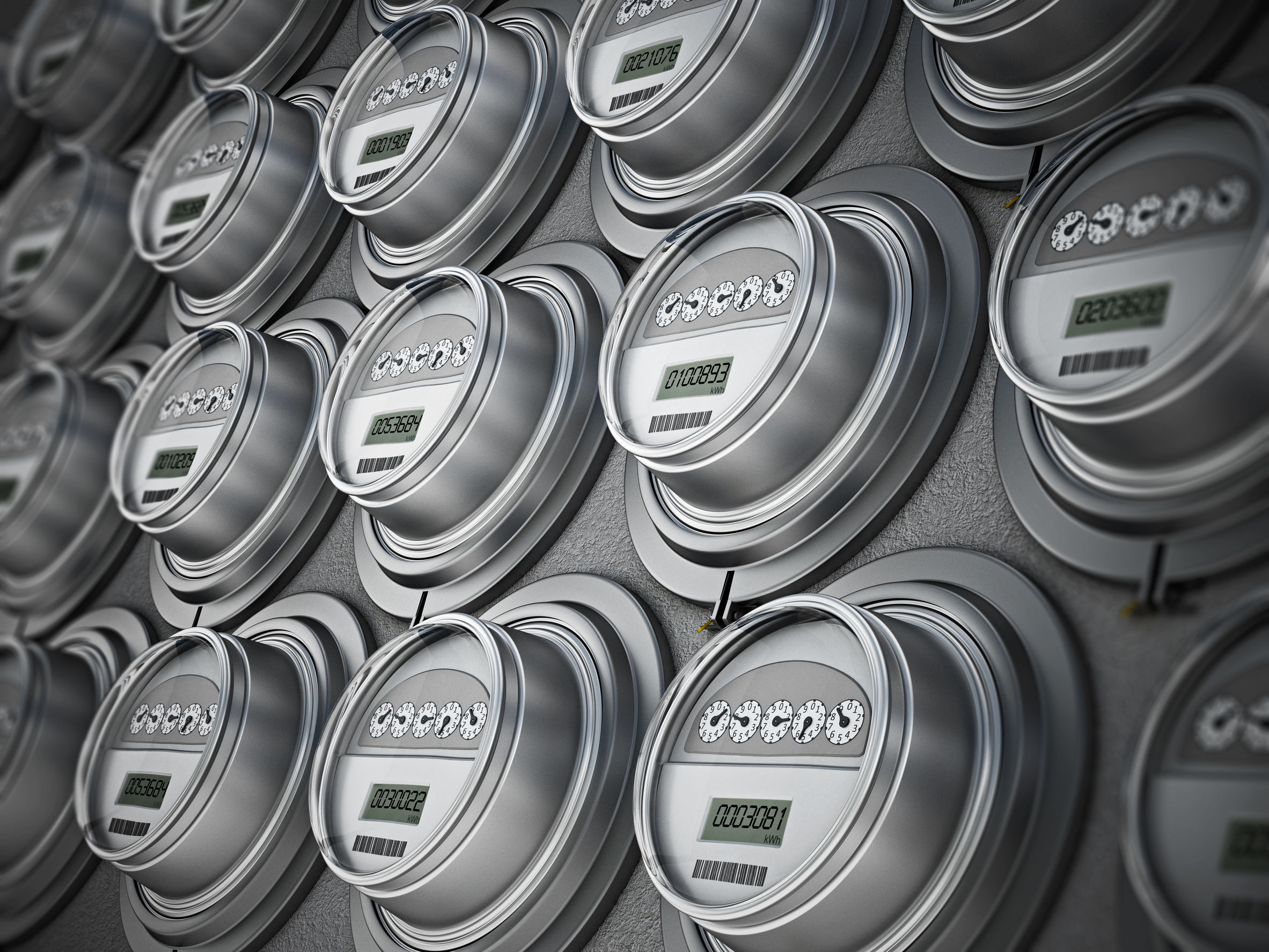India gets smart about metering
Estimated reading time: 10 minutes
All over the world, governments are migrating their power grids over to smart metering. But India has the most ambitious target of all: 250 million smart meters by 2026…
When India embarks on a new national project, it generally goes big. Consider its Unique Identification project, also known as Aadhar. It captured biometric data for half a billion residents, making it the largest project of its kind in the world. And now the government is midway through another similarly transformational scheme. This one is centred on smart metering.
In June 2021, Prime Minister Narendra Modi approved the Reforms-based and Results-linked, Revamped Distribution Sector (RDSS) scheme to strengthen supply infrastructure in the power sector. The central aim of the scheme was to address the massive Aggregate Technical & Commercial (AT&C) losses suffered by power distribution companies (DISCOMs) as a result of power theft, meter tampering, inaccurate billing and the length of time between a meter reading and a payment. It’s estimated that DISCOMs lose more than INR 100000 Crs a year because of these issues.
At the heart of the scheme is the smart meter national programme (SMNP), which aims to upgrade India’s 250 million conventional meters with smart replacements. Smart meters promise a range of benefits to both suppliers and consumers (see box).
In order to control the cost of the RDSS project, the government invited participants to execute their projects on a ‘TOTEX’ mode. TOTEX makes no distinction between capital investment (CAPEX) and operational spend (OPEX). Instead, it looks at the total cost over the operating life of the project. It means the government can issue its $40 billion of grants on completion and make payments on per meter basis.

Now, this process is well underway. RDSS is certainly an ambitious undertaking – one that the world is watching.
To understand more about it, we talked to Jitender Sandhu, Country Manager (Indico and ASEAN) for IoT products at Thales.
#1 - Can you summarise the advantages of smart metering vs conventional metering?
For utility companies, it’s really about addressing the post-paid billing period. With conventional meters, someone reads the meter and then it takes 15 days to process the bill. After that it takes six weeks for the user to pay. That’s a two month waiting period. It’s much too long.
Smart meters let you move to a pre-pay system, a bit like mobile airtime. You can charge in advance. You get your payment immediately and you reduce all kinds of revenue leakage. The government has estimated it can cut AT&C losses to 12 percent or less across all regions. Utility companies can also plan better because they can see much power they need to buy from suppliers by the minute, rather every two months.
For consumers, the main benefit is transparency. They can see how much power they are using and then regulate it. This doesn’t necessarily reduce consumption, but it does gives users some control.
#2 - How do consumers feel about this?
There is some resistance. The consumer mindset is: I currently pay after two months and now I have to pay in advance? So there’s an education challenge. But smart meters will make it easier to pay by offering a route to online billing. And the government has now launched an app, which consumers can use to monitor their usage.
#3 - What stage is the roll-out at now?
The move to smart metering actually started with enterprise customers 10 years ago. The RDSS announcement moved it forward, and this year there will be 50 million smart meter tenders. We’re expecting a lot of progress in 2023, but the industry might find it challenging to hit the 250 million target by 2026.
#4 - How is the scheme ensuring interoperability?
Well, the government has chosen this TOTEX model, which means that the utility companies are not buying infrastructure from a range of different vendors. They don’t want different companies supplying meters, modems, meter data management software and so on. Instead, it’s more like a system integrator model.
#5 - What role is Thales playing in the scheme?
We have worked with stakeholders to do the trusted key management integration.
This will ensure that every meter has different credentials or identity – inserted at the factory stage – and that these can be changed later through a remote secure server. It won’t be possible to access multiple meters with one credential key, which will protect critical infrastructure.
We are providing cellular modules, eSIMs and subscription management systems to meter manufacturers. The latter is important because it means if a utility company is exiting the business, the new provider can switch over all the subscribers without having to physically remove the SIM card in the meter. We also manufacture the hardware security modules with head-end system
Finally, we can help with analytics. Smart meters generate a lot of data, and we have developed systems that help partners to generate insights from this information.
Smart metering around the world
India’s RDSS scheme might be the most ambitious smart metering program to date, but it’s certainly not the first. In fact, countries have been converting to smart systems since the early 2000s. Sweden, for example, commenced its switch over in 2003.
So what’s the current state of smart meter adoption around the world? According to a 2021 report by Berg Insight, around 49 percent of the electricity customers in the EU’s member states had a smart meter by 2021 – and the penetration rate is expected to reach 72 percent by 2026. That’s equal to 200 million smart electricity
and gas meters deployed now, and 133 million more in the next four years.
France was the largest market by volume with more than 6 million units shipped during the year for a total of 35 million. Italy, now on its second generation rollout, deployed more than 5 million units in 2020.

Berg Insight estimates that 68 per cent of all electricity meters in North America are now smart. It says the installed base will grow by 5.7 per cent a year to reach a total of 153.8 million units.
Perhaps unsurprisingly the analyst believes the most advanced region is APAC. It forecasts that 572.3 million smart electricity meters will be deployed in China, India, Japan and South Korea during 2021 to 2025. This is equal to 69 per cent penetration and an installed base of 653.3 million units.
The benefits of smart metering
Smart meters are perceived to be more efficient than conventional systems. Indeed, studies reported by the European Commission as early as 2013 found that smart meters could help households could reduce their electricity bills by an average of 12 percent a year, with commercial consumers reducing consumption by as much as 58 percent. So what are the reasons for this?
• Better troubleshooting
With traditional meters, it can be hard to identify the cause of an outage. Teams of technicians are needed to identify the issue. Smart meters provide real-time performance data and can even send notifications before an outage occurs.
• Remote disconnection
With traditional analog meters, it can take many days for a utility company to send an engineer to terminate a connection. Smart meters can do this instantly and remotely, without the need to visit a customer’s residence.
• Dynamic pricing
The consumption information provided by smart meters is real-time. This gives DISCOMs the option to create dynamic pricing strategies variable by customer type, location, seasons or even time of day. They can use this to manage usage and avoid outages.
• Customer transparency
Knowledge is power. With a smart meter, consumers can see how much energy they are using at any time. They can use this knowledge to regulate their consumption.
• Reduced billing cycle
It can take many weeks for a customer to pay a bill after a reading. Smart metering enables the possibility of accurate pre-pay billing. The time reduction can make a huge difference to utility companies in terms of revenue leakage.
Related content:
Why every smart meter needs its own identity
5 steps to smarter device security systems – from factory to home


